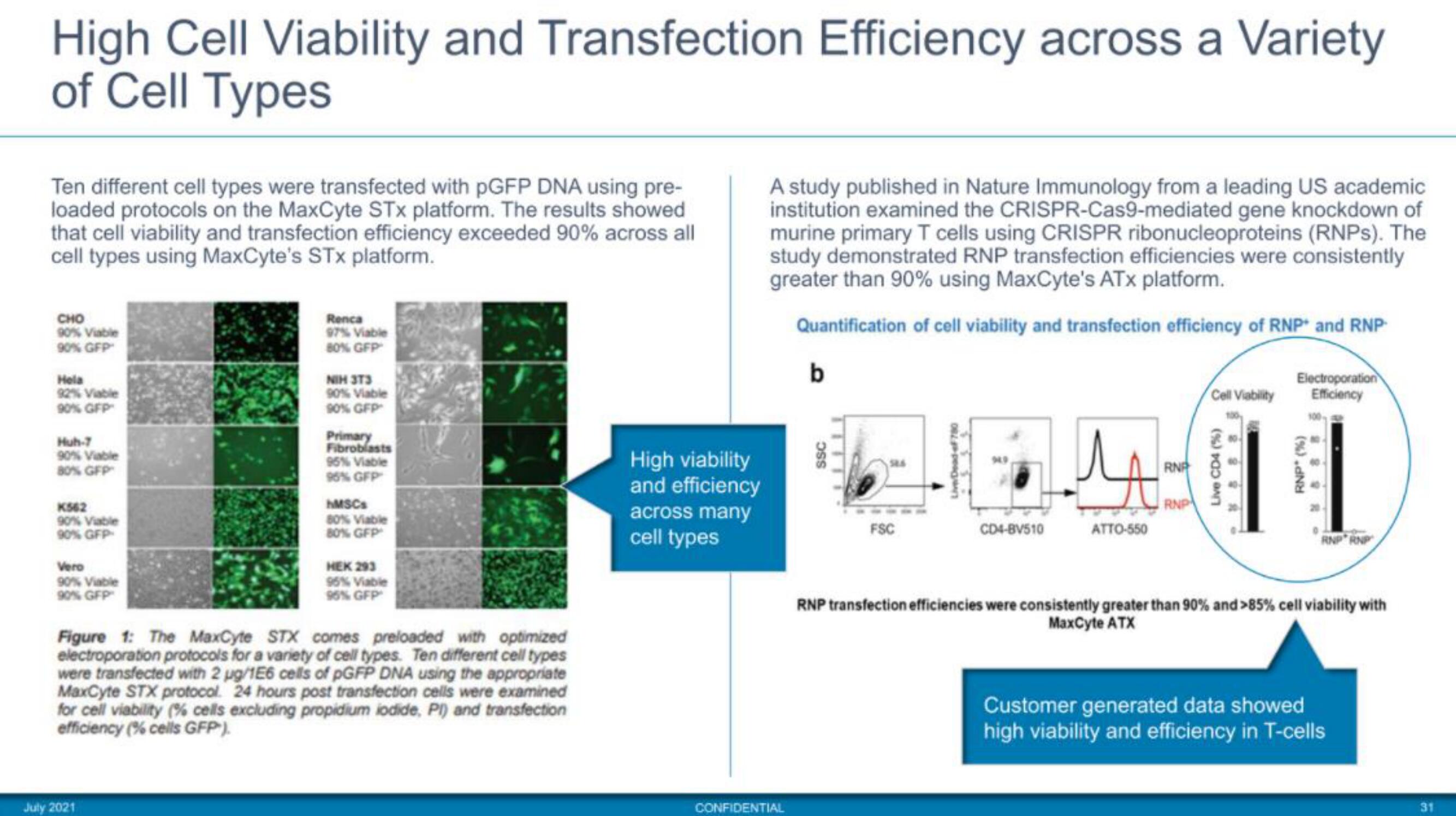MaxCyte IPO Presentation Deck
High Cell Viability and Transfection Efficiency across a Variety
of Cell Types
Ten different cell types were transfected with PGFP DNA using pre-
loaded protocols on the MaxCyte STX platform. The results showed
that cell viability and transfection efficiency exceeded 90 % across all
cell types using MaxCyte's STx platform.
CHO
90% Viable
90% GFP
Hola
92% Viable
90% GFP
Huh-7
90% Viable
80% GFP
K562
90% Viable
90% GFP-
Vero
90% Viable
90% GFP
Renca
97% Viable
80% GFP
July 2021
NIH 3T3
90% Viable
90% GFP
Primary
Fibroblasts
95% Viable
96% GFP
hMSCs
80% Viable
80% GFP
HEK 293
95% Viable
96% GFP
Figure 1: The MaxCyte STX comes preloaded with optimized
electroporation protocols for a variety of cell types. Ten different cell types
were transfected with 2 µg/1E6 cells of PGFP DNA using the appropriate
MaxCyte STX protocol. 24 hours post transfection cells were examined
for cell viability (% cells excluding propidium iodide, Pl) and transfection
efficiency (% cells GFP).
High viability
and efficiency
across many
cell types
A study published in Nature Immunology from a leading US academic
institution examined the CRISPR-Cas9-mediated gene knockdown of
murine primary T cells using CRISPR ribonucleoproteins (RNPs). The
study demonstrated RNP transfection efficiencies were consistently
greater than 90% using MaxCyte's ATX platform.
Quantification of cell viability and transfection efficiency of RNP and RNP
CONFIDENTIAL
b
SSC
FSC
08/peagwNT
CD4-8V510
4
ATTO-550
RNP
RNP
Cell Viability
Live CD4 (%)
Electroporation
Efficiency
RNP* (%)
RNP transfection efficiencies were consistently greater than 90% and >85% cell viability with
MaxCyte ATX
Customer generated data showed
high viability and efficiency in T-cells
31View entire presentation